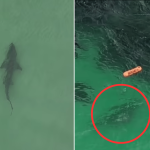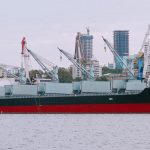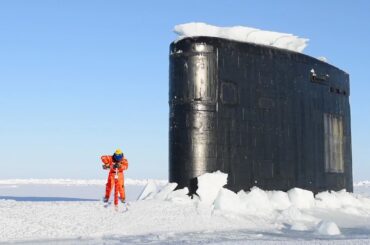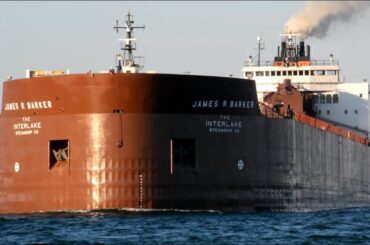The term’ research vessel’ is often used to describe a wide variety of vessels, but what exactly does it mean? As an expert in the field, I can tell you that research vessels are specialized boats designed for carrying out scientific operations. They’re essential tools for scientists and researchers who need access to the world’s oceans and waterways so they can explore new discoveries or develop new technologies. In this article, I’ll explain what makes a research vessel unique and why these ships are so important.
First, let me start by discussing what sets a research vessel apart from other types of boats. Unlike recreational or commercial vessels which may have limited capabilities, research vessels are equipped with state-of-the-art equipment specifically tailored for conducting experiments at sea. This includes advanced navigation systems, sophisticated communication systems, powerful engines and much more. Furthermore, their hulls have been designed to endure high speed sailing as well as rough seas – making them ideal for use in any environment.

On top of all that, research vessels also require highly trained personnel due to the complexity of their missions. Captains must be knowledgeable about oceanic conditions and regulations while crew members must understand how to operate onboard instruments correctly. Collecting data safely on open water takes a lot of skill and expertise!
In conclusion, understanding what makes research vessels unique requires knowledge beyond essential boating skillsets. These impressive boats combine advanced technology with experienced crews to help us unlock mysteries beneath the waves – giving us invaluable insight into our planet’s most precious resources.
Definition
A research vessel is a scientific vessel designed and built to assist in the conduct of oceanographic and other marine-based research. They are used for a variety of tasks, such as providing support for deep sea exploration, surveying underwater terrain, collecting samples from seabeds or conducting experiments. Research vessels can also be used for educational purposes, allowing students to gain hands-on experience with oceanography and related fields.
Research vessels come in all shapes and sizes; some are small enough to fit onto a single boat while others span multiple decks or even entire ships. Regardless of size, they must have certain features that make them suitable for performing their intended function. These include advanced navigation systems, powerful engines capable of navigating through rough waters, specialized equipment necessary to carry out specific tasks (such as sonar or magnetometers), laboratories equipped with analytical tools, and comfortable accommodations for passengers and crew members. In addition, research vessels typically require extensive maintenance due to the nature of their work – operating in harsh environments and often travelling long distances at high speeds. With proper care and maintenance, however, these vessels can provide invaluable data on various aspects of our oceans and coastal areas which help us better understand these vast bodies of water.
Design And Structure
Now that we’ve established what a research vessel is, let’s look at the design and structure of these vessels. Research vessels come in all shapes and sizes, ranging from small boats to larger ships. Generally speaking, they have strong hulls made of materials like steel or fiberglass which are designed to withstand harsh weather conditions.
The interior layout of each vessel varies depending on its purpose; for example, some may be equipped with laboratories while others may feature cargo holds. Other common features include navigation systems, communications equipment, and scientific instruments.
No matter what type of research vessel you’re looking for, it should always provide enough space for safe operations as well as necessary amenities such as sleeping quarters and recreational areas. In short, there should never be any compromise when it comes to safety and comfort aboard a research vessel.
Primary Uses And Applications
A research vessel is a multi-purpose ship used for a variety of scientific activities, focusing primarily on marine biology, oceanography studies and oil exploration. These ships are also used to conduct environmental monitoring as well as deep sea exploration. They provide an ideal platform from which scientists can observe, monitor and test the environment in order to gain new knowledge about our planet’s oceans.
The use of these vessels has become increasingly important in recent years due to the growing need for understanding how climate change impacts our world’s oceans. Research vessels are equipped with advanced technology such as sonar systems, specialized navigation equipment and robotic devices that allow them to explore uncharted areas or depths unreachable by humans alone. Additionally, they have sophisticated laboratories onboard where samples can be analyzed quickly and accurately while out at sea.
Research vessels offer invaluable tools for gathering data related to ocean health and resources, allowing us to better understand our planet’s natural processes and make more informed decisions moving forward. As the demand for information about oceanic life grows, so too does the importance of these vessels in helping us learn more about their ecosystems.
Equipment On Board
Moving on from the primary uses and applications of a research vessel, let us examine the equipment that is typically found onboard these vessels. Research vessels are equipped with specialized instruments, tools, and systems for performing scientific activities like collecting samples or making measurements in the field.
The below list outlines some of the key components found on board:
- Research Vessel Instruments- These include devices such as sonars and multibeam echosounders used to collect data from aquatic environments.
- Research Vessel Tools – This includes items such as dredging gear, GPS receivers, corers, cameras and other laboratory supplies necessary for sampling or analyzing specimens.
- Research Vessel Components – This can range from computers and communication systems needed to control instrumentation to climate monitoring stations that measure air temperatures, wind speed and direction.
- Research Vessel Systems – Many research vessels feature sophisticated computer based navigation systems that enable them to accurately map their course through various bodies of water. Additionally they may have advanced propulsion systems designed to reduce fuel consumption while aiding maneuverability in rough seas.
In short, research vessels come fitted with an array of high-tech equipment that allows scientists to conduct detailed studies in both shallow and deep waters across all sorts of marine environments. The information gathered by this equipment provides valuable insight into oceanic processes – helping researchers better understand our world’s oceans and coastal areas.
Crew Requirements
Operating a research vessel requires highly-skilled personnel, and the crew must meet certain requirements. Minimum qualifications for staff selection include having maritime experience and certification. Crew members should have an understanding of navigation, boat handling, engineering, electronics, communications systems, safety procedures, and other relevant skills. Furthermore, they must be able to use computers and specialized scientific equipment on board the vessel.
Qualifications needed also depend on the type of mission being performed aboard the ship. For example, if biological sampling is part of the mission then marine biologists will need to join the team; or if geophysical surveys are being conducted, then seismologists may require additional expertise as well. Other technicians may be required depending on what specific objectives are assigned during each voyage. In addition to technical knowledge and skill sets, it’s important that crews work harmoniously with one another, so it’s essential for all personnel to receive appropriate training prior to embarking on any research voyage in order to ensure safe operations at sea.
Size And Type Of Research Vessels
Now that we’ve discussed the crew requirements for research vessels, let’s explore their size and type. Research vessels come in various sizes, ranging from small boats to large ships. They also range in type, with some designed specifically for shallow-water exploration while others are able to traverse deep waters.
When considering which size or type of research vessel is best suited for your needs, it’s important to consider the following:
- The specifications of the vessel (including its length, width and draft).
- Whether the vessel has enough space on board to accommodate both a crew and any additional scientific equipment needed for the mission.
- How capable the vessel is when navigating different types of terrain such as coastal areas or open oceans.
No matter what size or type of research vessel you choose, it must be equipped with all necessary safety features so as not to put anyone at risk during operations. Additionally, each vessel should be outfitted with modern navigation systems and sensors required for data collection purposes. By ensuring these criteria are met when selecting a research vessel, you can ensure successful missions by sea.
Cost To Operate
In order to understand the true cost of operating a research vessel, it is important to consider all associated expenses. These include fuel costs, maintenance costs and other operational costs such as crew salaries and food supplies. Fuel is typically the largest expense for a research vessel and can range significantly depending on size and type of vessel used. Additionally, regular maintenance must be conducted in order to keep the vessel running safely and efficiently – these costs should also be taken into account when calculating total operating expenses.

Research vessels may also require additional specialized equipment to conduct their studies which will add further costs to the overall budget. Furthermore, any necessary modifications or upgrades need to be accounted for in the final cost estimate. All together, these factors determine the cost-effectiveness of using a research vessel, so they should not be overlooked when evaluating potential project options. When properly managed, owning and operating a research vessel can provide an invaluable asset for scientific exploration at relatively low cost.
Benefits Of Using A Research Vessel
Considering the cost to operate a research vessel, one must also consider the benefits. Using a research vessel can make operating at sea safer and more efficient than using smaller boats or even aircraft. Research vessels are designed to withstand harsh ocean conditions while still providing comfort for crew and passengers alike.
The use of a research vessel is often necessary when working with larger equipment such as sonar devices, water sampling pumps, and other bulky scientific instruments. Additionally, many modern vessels have laboratories onboard which allow researchers to conduct experiments in real time without having to return samples to shore-based labs. This saves both time and money when conducting complex studies on the open ocean.
Not only does having access to these resources increase safety for personnel, but it also increases efficiency allowing data collection from remote locations that would otherwise be impossible or considerably more expensive to reach. Ultimately, investing in a quality research vessel can provide substantial savings in both operational costs and manpower over traditional methods of marine exploration.
Potential Challenges Of Operating A Research Vessel
Operating a research vessel comes with many challenges that must be carefully managed. Research vessels are designed to provide safe and reliable access to marine environments, but they can also pose certain risks if not operated properly. Safety protocols must be followed strictly in order to minimize the likelihood of harm or injury, while crew duties must be clearly established and adhered to at all times. Additionally, regular maintenance is essential for keeping a research vessel in optimal condition.
Vessels used for oceanographic work require specialized equipment which may need repair or replacement on occasion, creating further complications when it comes to operating a research vessel. The environment itself presents its own set of unique conditions that must be taken into account when planning voyages and conducting experiments onboard. Weather patterns, currents, and sea life can all contribute to unexpected obstacles during a mission – emphasizing the importance of having an experienced captain and attentive crew aboard any research vessel voyage.
Regulations And Laws Governing Research Vessels
The potential challenges of operating a research vessel are numerous, but there are regulations and laws in place to ensure the safety of those on board. Research vessels must adhere to strict rules and guidelines for their operations, covering everything from personnel qualifications and onboard equipment to seafaring safety protocols.
International maritime law applies to all ships at sea, including research vessels. This includes both national and international requirements, such as the International Regulations for Prevention of Collisions at Sea (COLREGS), which governs how ships interact with each other. In addition, some countries have specific regulations related to research vessels that can provide additional protections or restrictions depending on where they operate. For example, most nations require crew members aboard research vessels to hold certain certifications or licenses in order to work legally on the ship.
Research vessel safety is paramount when it comes to protecting personnel and conducting successful experiments. All vessels must be equipped with necessary lifesaving gear like lifeboats, personal flotation devices (PFDs) and fire-fighting equipment along with navigation systems such as radar, radios and Global Positioning Systems (GPS). Furthermore, comprehensive training programs should be conducted before embarkation so that everyone knows what needs to be done during an emergency situation. Additionally, regular maintenance checks should take place throughout the voyage in order to identify any potential issues before they become major problems.
Health And Safety Considerations
The health and safety of the crew members on a research vessel is of utmost importance. Before any voyage, a series of protocols must be in place to ensure their well-being during the mission. This includes assessing potential health risks posed by hazardous materials onboard or in the areas that will be visited, as well as steps taken to prevent such hazards from arising. Additionally, emergency procedures should be established for any unexpected events that might occur while at sea.
To further protect the crew’s health, regular medical exams should be conducted throughout the duration of each voyage. In addition to physical exams, mental health assessments may also be necessary if there are long periods spent away from shore. All crewmembers should have access to proper healthcare services both during and after missions in case any complications arise due to their work environment. Ultimately, adhering to these protocols can help ensure a safe and successful research venture for all involved.
Maintenance Requirements
Now that health and safety considerations have been accounted for, it’s time to discuss the maintenance requirements of a research vessel. Keeping a research vessel in tip-top shape is essential for its continued operations. Vessels must be inspected on a regular basis and any necessary repairs should occur as soon as possible – no matter how small or insignificant they may seem. This will ensure the longevity and reliability of the vessel throughout its operational life.
When inspecting and performing upkeep on a research vessel, there are several areas which must be addressed; these include but are not limited to: propulsion systems, electrical components, fuel tanks/lines, hull integrity checks (including anti-fouling), navigational equipment calibration and other electronics testing. Additionally, all onboard personnel should familiarize themselves with each piece of machinery and understand their respective functions aboard the vessel. This knowledge can help identify potential issues before they arise during operations. It is also important to note that some vessels require specific types of engine oil or coolant fluid replacements depending on their age or model type. Adherence to these standards is critical when it comes to maintaining research vessels in good condition.
To sum up, proper maintenance of a research vessel is crucial for both safety reasons and overall performance while out at sea. Regular inspections, timely repairs, and knowledgeable crew members are all key ingredients when it comes to keeping research vessels running smoothly over long periods of time.
Popular Locations For Research Vessels
Research vessels are often found in some of the world’s most popular locations, including the Arctic Ocean, Mediterranean Sea, Indian Ocean, South Pacific and Bering Sea. Each location offers a unique opportunity for research due to its various geographical features and wildlife.
In the Arctic Ocean, research vessels can investigate the effects of climate change on sea ice formation and explore how species adapt to extreme temperatures. The Mediterranean Sea provides an ideal environment for studying ocean currents and analyzing sediment layers from human activity over time. In addition, a variety of marine life inhabits this region – making it a great spot for observing different behaviors and migration patterns. The Indian Ocean is known as one of Earth’s richest fishing grounds – providing researchers with valuable insight into stock management practices and fish population dynamics. Meanwhile, the South Pacific is home to some of the world’s deepest trenches which make it a perfect site for deep-sea exploration activities such as seafloor mapping or submarine surveys. Lastly, the Bering Sea is renowned for its abundance of whales that migrate through this area annually – giving researchers plenty of opportunities to observe their behavior up close.
Overall, these five regions offer fascinating insights into our planet’s many wonders – offering scientists ample opportunities to conduct much needed studies on issues ranging from environmental conservation to economic development.
How To Obtain Access To A Research Vessel
Obtaining access to a research vessel is not an easy task. It requires extensive preparation and the necessary permissions from various authorities. Here are some steps that must be taken in order for one to gain access rights:
- Obtain permission from maritime authorities- Research vessels operate within certain zones, so it is important to get approval from local or international governments before gaining access.
- Contact the research vessel’s owner- The owner of the vessel should provide details on what kind of access they are willing to grant, as well as any restrictions associated with utilizing their research vessel.
- Follow safety protocols- Safety protocols need to be followed in order to protect both personnel onboard and those conducting studies outside of the vessel.
- Understand legal obligations- Depending on where you plan to conduct your study, there may be additional laws that require compliance when accessing a research vessel.
In addition, researching all available options ahead of time is essential for determining which approach suits your needs best. Having an understanding of the different types of vessels, their capabilities, and cost estimates can help researchers select the most suitable option for their project objectives. Ultimately, taking these precautionary measures will ensure smooth sailing while obtaining access rights aboard a research vessel.
Future Prospects For The Industry
The future of the research vessel industry looks promising. Advances in marine research technology are driving new trends, such as using autonomous vessels for data collection and exploration projects. Autonomous vessels can cover greater distances than manned vessels and provide more accurate readings due to their advanced navigational capabilities. This could lead to a wider range of scientific discoveries that would be impossible with traditional methods.
Data collected by these vessels is also becoming increasingly valuable, as it offers insights into oceanic phenomena not previously accessible. Furthermore, the use of artificial intelligence-driven analysis tools has opened up opportunities for scientists to gain access to real-time data from remote locations. These advancements have made it easier for researchers to conduct experiments in difficult environments or at great depths without risking human lives.
These developments will continue to revolutionize the way we explore our oceans and make groundbreaking discoveries about our planet’s aquatic lifeforms. As this trend continues, research vessels will become an invaluable tool for collecting and analyzing data on a global scale – allowing us to further unlock secrets hidden beneath the waves.
Frequently Asked Questions
What Kind Of Research Can Be Conducted On A Research Vessel?
Research vessels are designed for a wide range of scientific investigations, such as oceanography and marine biology. They can also be used to collect data and carry out chemical analysis on water samples from the sea or other bodies of water. Fisheries research is another area where research vessels come in handy.
These vessels have specific designs that enable them to conduct experiments more efficiently than land-based laboratories. Their hulls provide stability in rough seas, while state-of-the-art equipment allows for accurate measurements even when waves are high. In addition, they often contain specialized systems for collecting data quickly and effectively over long distances. Research vessels also typically feature an onboard laboratory with the necessary facilities to analyze collected materials.
In short, research vessels offer great versatility when it comes to conducting various types of research related to oceanography, marine biology, fisheries, and chemical analysis. With their special features and capabilities, they make it easier for scientists to explore our oceans and gather valuable information about its depths – all without ever having to leave dry land!
How Long Does It Take To Travel On A Research Vessel?
When it comes to research vessel travel, the duration of a voyage can vary greatly depending on its purpose and destination. Research vessels are typically designed for extended periods at sea, often with trips lasting up to several months or longer. However, there are also occasions when shorter trips may be more suitable; such as if the research required is relatively quick or specialized in nature.
For instance, let’s say that you’re planning a trip aboard a research vessel to conduct oceanographic surveys in an area previously unexplored by scientists. This type of research requires detailed data collection and analysis over time, so your trip could take weeks or even months to complete successfully. On the other hand, if you were looking for an isolated species of fish or studying climate change impacts nearer to shore, then your journey would likely last only a few days instead.
No matter what kind of research travels you undertake on board a research vessel, it’s important to consider how long each venture will require before committing resources – both financial and personnel – towards making those plans a reality. Knowing the estimated duration for any given project ahead of time allows researchers to plan adequately and prepare their team accordingly for whatever conditions lie ahead during their vessel research trip.
What Is The Average Cost Of Renting A Research Vessel?
When it comes to renting a research vessel, the cost can vary depending on how long you need the vessel and what type of services are included in the rental. As an expert in researching vessels, I can tell you that there is no one-size-fits-all answer when it comes to pricing. Here are some factors to consider when determining the average cost of renting a research vessel:
- Type of Research Vessel – Different types of boats come with different price tags, from small skiffs to larger oceanographic vessels.
- Length of Time Needed – The longer you need the boat for, the more expensive it will be.
- Services Included – Will you be needing crew or equipment? Those additional services add up quickly.
- Location – Are you looking at rentals nearshore or offshore? Renting further out at sea usually costs more than closer inshore locations.
- Fuel Costs – Depending on fuel usage and distance traveled, this could significantly increase your rental costs.
Keep in mind that these factors may affect not only the overall cost but also any applicable fees or taxes associated with renting a research vessel. Be sure to evaluate all options carefully before making your decision so that you know exactly what kind of deal you’re getting and whether it’s worth investing in a rental vessel instead of owning one outright.
How Long Does It Take To Maintain A Research Vessel?
Maintaining a research vessel is an important and time consuming process. It requires the utmost care to ensure that all of the components are working correctly, as any malfunctions can have serious consequences for the safety of those onboard. Generally speaking, it takes between two and three weeks to properly maintain a research vessel, depending on its size and complexity. During this period, all major systems must be inspected and serviced in order to keep them functioning optimally.
The maintenance schedule for a research vessel will vary from one vessel to another. Factors such as age, condition, type of equipment used, and amount of use will all influence how long it takes to complete upkeep procedures. Some routine maintenance may be performed more frequently than others – for example, fuel filters should be changed every month or so while other tasks may only need to be done annually or semi-annually. The total length of the overall maintenance procedure depends largely on these factors combined with the expertise and resources available for performing the maintenance work.
Therefore, when considering how much time is needed to maintain a research vessel, many different elements come into play which ultimately determine how well maintained it remains throughout its lifespan. Knowing what kind of systems are present on board along with their respective service timelines helps provide an estimate of just how long it might take to keep a particular vessel running smoothly over time.
What Kind Of Safety Measures Are In Place For Research Vessels?
When it comes to research vessels, safety is paramount. All research vessel operators must comply with the regulations and protocols set forth by both national and international maritime organizations. Research vessel security requires that all necessary precautions be taken to ensure the safe operation of a vessel at sea. This includes such measures as emergency preparedness plans, regular equipment inspections and maintenance, crew qualifications, navigation systems updates, proper communication protocols, and an overall understanding of best practices for operating in various conditions.
In order to maintain these safety standards on a research vessel, rigorous procedures are put into place during the design phase of construction. This ensures that fire protection systems meet relevant codes and that lifesaving appliances are up-to-date with current regulations. Additionally, depending upon the type of mission being conducted aboard the ship, additional measures may need to be taken in order to protect personnel or sensitive equipment. Such steps could include increased surveillance capabilities or specialized protective gear for those onboard.
It’s essential that researchers understand how important it is to adhere to all safety requirements while conducting their work from a research vessel. Taking extra care when making decisions related to marine operations can help make sure everyone remains safe while performing their duties at sea.
Conclusion
In conclusion, research vessels are a valuable asset for conducting various types of scientific and environmental research projects. They provide scientists with the ability to travel long distances in order to conduct their studies, without having to worry about inclement weather or other conditions which can interfere with research efforts.
Furthermore, they allow researchers access to areas otherwise inaccessible due to limited resources or safety concerns. In addition, renting a research vessel is relatively affordable when compared with other modes of transportation, while regular maintenance helps ensure that these vessels remain seaworthy over time.
All crew members aboard any research vessel must be aware of and adhere to specific safety protocols designed to protect both the personnel and equipment onboard at all times. With all this taken into account, it’s easy to see why so many people choose to use research vessels for completing their important work.






